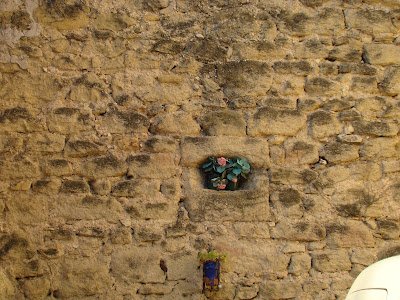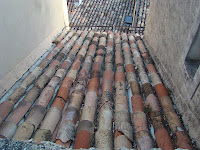One thing that helped is Ricky and I took a "head-clearing" day trip this past Saturday to Saline, Louisiana, location of Briarwood, the Caroline Dormon Nature Preserve. Caroline Dormon, 1888-1971, was a botanist, horticulturist, ornithologist, historian, archeologist, preservationist, naturalist, conservationist, author and a distant cousin of my husband, Ricky. Briarwood was the country home of Dormon's family, and Caroline grew up loving nature and the out-of-doors. As an adult, she re-established her home at Briarwood in 1918 and began to preserve the native plants growing there and to introduce more examples of native plants on her property.
She initially taught school after graduation from college, but in 1921 she went to work for the Louisiana Forestry Division, the first woman in Louisiana to be hired in forestry and also believed to be the first woman in the United States to be employed in the field of forestry. Dormon was instrumental in getting the U.S. Forest Service to establish the Kisatchie National Forest, the only national forest in Louisiana. She later worked as a beautification consultant for the Louisiana Highway Department.
However, her real love was Briarwood and working with flora and fauna there. When she died, she willed Briarwood to the public. There is now a Foundation for the Preservation of the Caroline Dormon Nature Preserve. The nature preserve has two full-time curators, Richard and Jessie Johnson, and additional buildings have been added over the years that allow the public to experience the beauty of Briarwood, including a writer's cabin that I intend to utilize some day!
The preserve is open during certain months for tours and has an annual picnic for supporters and other interested persons. There are always members of Ricky's family at the picnic so we try to attend each year. Last year's drought necessitated the Johnson's cutting back all the native azaleas that usually put on a showy display during the annual picnic. This year the woods weren't filled with color, rather a palette of peaceful green was the theme of the day.
 |
| Walking through the woods |
 |
| Caroline Dormon's Cabin |
 |
| Longleaf pine called Grandpappy: oldest tree at Briarwood |
 |
| Lichen on tree stump |
 |
| Toadstool |
 |
| At the pond |
 |
| Oakleaf hydrangea blossom |
I'm thankful that Caroline Dormon decided to share her home with others after her death. A biography of Dormon's life is available--The Gift of the Wild Things, by Fran Holman, who also has collected Dorman's essays in a volume, Adventures in Wild Flowers. In addition, Dormon herself wrote Flowers Native to the Deep South.
Caroline Dormon noted in 1942: "I was born with something--I call it 'the gift of the wild things'--and because I am simple myself, and have a sympathetic heart, I can understand animals and simple people to an unusual degree. I see, too, so much that others miss. When I know so many lovely things, I feel greedy in keeping them all to myself."













































